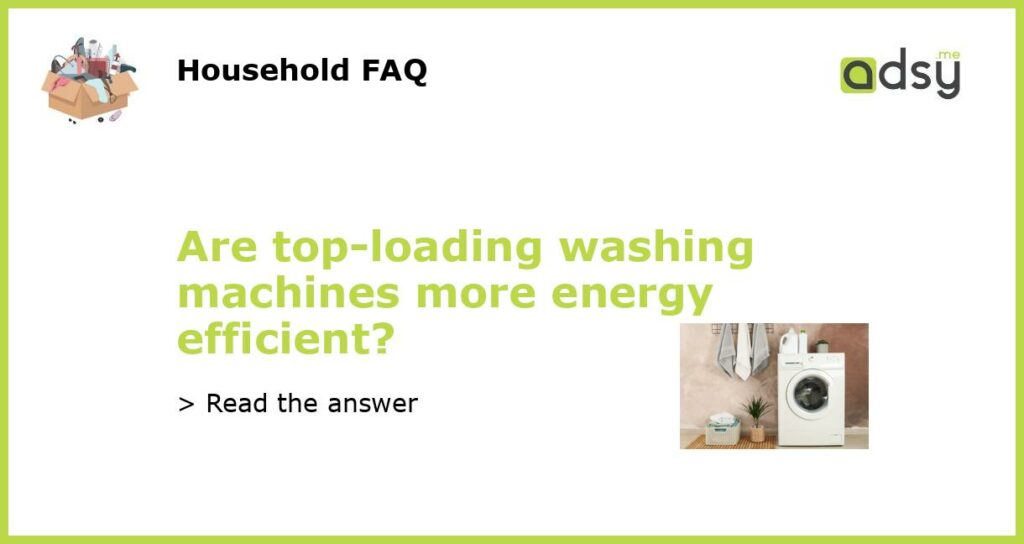Top-Loading vs. Front-Loading Washing Machines: The Energy Efficiency Debate
When it comes to buying a new washing machine, energy efficiency is often a top consideration for consumers. The question of whether top-loading washing machines are more energy efficient than front-loading machines has been the subject of much debate. Let’s explore both types of machines and compare their energy efficiency to determine which option is the best choice for environmentally-conscious consumers.
The Energy Efficiency of Top-Loading Washing Machines
Top-loading washing machines have been the traditional choice for many households. These machines feature a drum that is vertically oriented and a door on the top of the machine for loading and unloading clothes. However, when it comes to energy efficiency, top-loading machines do have some drawbacks.
One of the main energy efficiency concerns with top-loading washing machines is the amount of water they use. These machines typically require more water to fill the drum and wash the clothes compared to front-loading machines. This means that top-loading machines can consume more energy to heat the larger amount of water used in each cycle.
Another factor to consider is the agitator, which is a central spindle or column in the drum of a top-loading machine. The agitator is responsible for moving the clothes around during the wash cycle. While this mechanism is effective at cleaning clothes, it can also be more energy-intensive compared to the tumbling action of a front-loading machine.
Overall, while top-loading washing machines have improved in energy efficiency over the years, they are generally not as energy-efficient as front-loading machines.
The Energy Efficiency of Front-Loading Washing Machines
Front-loading washing machines have gained popularity in recent years due to their superior energy efficiency. These machines feature a drum that is horizontally oriented and a door on the front of the machine for loading and unloading clothes. Front-loading machines offer several energy-saving benefits compared to top-loading machines.
One of the main advantages of front-loading washing machines is their water usage. These machines typically use less water in each cycle compared to top-loading machines. This not only reduces water consumption but also decreases the amount of energy needed to heat the water.
Additionally, front-loading machines do not have an agitator, but instead, they use a tumbling action to clean clothes. This gentler movement is not only more gentle on the clothes but also less energy-intensive compared to the agitating action of a top-loading machine.
Furthermore, front-loading machines often have more advanced technology and features that contribute to their energy efficiency. For example, many front-loading machines have sensors that detect the weight and dirtiness of the clothes, allowing for more precise water and energy usage.
The Bottom Line: Front-Loading Machines Are More Energy Efficient
Based on the information presented, it is clear that front-loading washing machines are more energy efficient compared to top-loading machines. They use less water, require less energy to heat the water, and have more advanced technology that maximizes energy efficiency.
While top-loading machines have improved in energy efficiency over the years, they still cannot match the energy-saving capabilities of front-loading machines. If you are looking for a washing machine that is both environmentally friendly and cost-effective in the long run, a front-loading machine is the best choice.
When purchasing a new washing machine, be sure to look for Energy Star certified models, as these machines meet strict energy efficiency guidelines set by the U.S. Environmental Protection Agency. Additionally, always follow best practices for laundry, such as washing full loads and using cold water whenever possible, to further maximize energy efficiency and reduce your environmental footprint.






